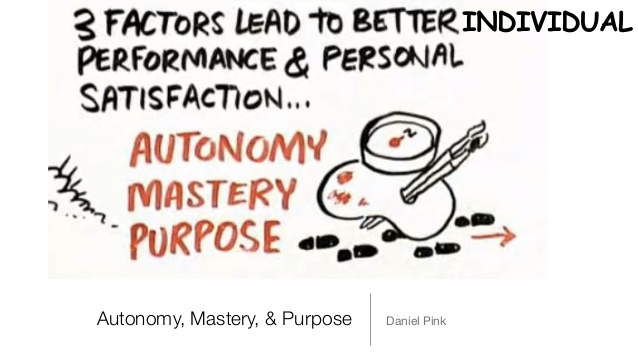
Here’s to all those who make us laugh! Without any need for alcohol or even inspiration, something said or done, a facial expression or shoulder shrug, and we are happily taken off-guard and laughter follows. No matter the setting. In fact, I have memories of laughing with friends at the family visitation before my mom’s funeral. As off-putting as that might have been for some, it was a joy in reminiscing over shared times together, with Mom in the mix. I’m sure in some Heavenly space, Mom was glad for that momentary release from grief for us. Laughter…what a gift!

Earlier this morning, I was thrifting with my friend, Angela. We were scanning titles in the used book section of the store, out of view of each other. Then I heard her actively engaged in animated conversation with a man also looking at books. They clearly knew each other and their laughter at this chance meeting splashed over into my own heart. He was an old co-worker from another season of her life, Angela would tell me, and it was a happy remembrance of those days.
For me, it was just fun to hear her laugh. I was reminded of a situation yesterday afternoon while reading a book my daughter had shared with me. She said I should occasionally take a break from my serious non-fiction reading and recharge with some fiction. The first book she lent me, some weeks ago, was author Gary D. Schmidt‘s Okay For Now. [I highly recommend it to anyone who needs a break from the serious.] I finished it in a couple of days. Then she gave me Schmidt’s The Wednesday Wars. Both books tell the story of middle school boys and the trials and tribulations of their lives (as seen through their oftentimes hilarious take on reality). The stories are set in the late 60s during the Vietnam War era (I resonated so much with that period and those stories).

There’s an especially funny part in The Wednesday Wars where seventh-grader Hollings, the hero of this story, was assisting the school custodian, who was replacing bulging ceiling tiles damaged by two enormous rats. Previously, the rats were the class pets (cute when tiny, terrifying once grown) but they escaped and built a nest in the unseen space above. In dislodging one tile, the custodium unleashed an avalanche – the gross, chewed up contents of the rats’ nest fell straight down onto Hollings’ head. [You’ve got to read it to know just how hysterical it was.] Reading that portion out loud to husband Dave – we were both laughing so hard, it was nearly impossible for me to finish what I wanted to share with him.
Laughter.
All this gave pause today, thinking about the joy of laughter. I’m a fairly serious sort, so folks aren’t drawn to me for hilarity. You can count on me to stay in the room if you’re struggling with something. Hopefully, you might feel better, encouraged, hopeful after our visit, but laughing out loud? Probably not. Thankfully, others bring that gracious gift to relationships.
[I actually took a few minutes to go through my phone directory to be reminded of those who simply brighten life by showing up…more than that, they regularly make me laugh. They probably aren’t that way all the time, but they are genuinely and gently funny. Steve C., John D., Sarah DeJ., David G., Anne S., Heba T., and Sharon W. Combinations of people also have a chemistry that literally combusts laughter for everyone – Khiry, Cam, and EB are such friends. Who are your people?]
Being a serious person who leads a fairly quiet life, I end up going to reels on social media for laughter (too often really; should just invite these friends over for dinner…or invite ourselves for coffee dates). Recommended for you are the three comedians below…there are many others, including folks who are just funny without making a living at it. Please put any favorites of yours in the Comments.
Michael Jr. – From Comedy to Clarity
Finally, in my family of introverts, I’ve had great cause for laughter. Husband Dave is one who makes me laugh. He can be very serious himself, but his take on life can be quite oddly funny. He also remembers perfect lines from movies for just about any situation.

Then there are our children. Christie, as older sister to her brothers, has always been a buffer for their shenanigans. She calls them back to perspective and, like her dad, has a sharp memory for stories, situations, and song lyrics (that make us laugh and can shake us all out of sourness). Her tales of babysitting in college and teaching kids in public school are still favorites when we’re together. Now with children of her own (who aren’t subjects for social media), she captures the sweet and funny with them and shares with us.

Nathan, our middle child, makes us laugh, with his many faces, and his wise and sometimes unusual takes on life. Growing up, he could be hard on both his big sister and little brother, and yet he also brought the joy. Even more now.


Daniel, our youngest, is also one who can make us laugh and whom we want to make laugh. He loses it better than anyone I know. We never tire of each of the kids’ retelling stories of Daniel’s antics growing up and his many funny outbursts and creative word pronunciations. We have hilarious memories from our family vacations together, especially in the seaside town of Oualidia, Morocco. Like experiencing seafood we’d never eaten before – sea urchin (the spiny exterior was still moving) is one that caused uncontrollable laughter at our table.



Is There Laughter in Your Walls? – Cavin Harper
The grandkids are their own story which I won’t share here. Still, don’t kids say amazing things? Their wonder and joy at living, their perspective on life, and their sibling and cousin challenges and how they get sorted…always make me smile.
So there you go…now, you may be one of those people in your world that makes others laugh. I just want to thank you for that. If you’re one who takes life more seriously (as part of your own wiring), and you don’t have regular encounters with the people above, maybe it’s time to take an inventory. Watching YouTube videos or Instagram reels are a bandaid for sure, but let’s be intentional about having laughter in our lives. That generous kind that spills over into the lives of others. Bring it!
[Please comment on those folks, professional and personal, who make you laugh. Share away. Also what do you do to up your appreciation of the joys around you? – like collecting and remembering stories, journaling the joys of life, being present in the moment wherever you are and whomever you’re with.]
Laughter in the Walls – a poem by Bob Benson
Leave Some Laughter in Your Walls – The Raineys
The Science Behind the Joy of Sharing Joy – Emma Seppälä Ph.D.
Stress Relief from Laughter? It’s No Joke – Mayo Clinic
How Does Humor Affect Mental Health? – Dan Brennan
Give Your Body a Boost–with Laughter – R. Morgan Griffin
Feel-good Hormones: How They Affect Your Mind, Mood, and Body – Stephanie Watson








